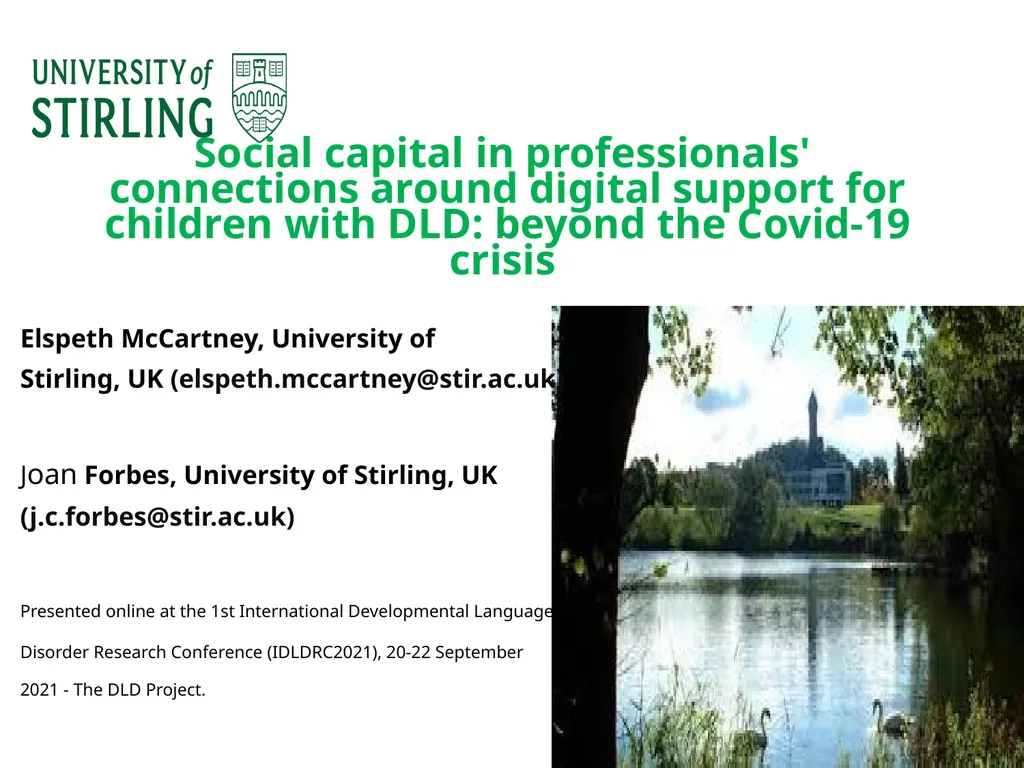
Social capital in professionals' connections
Author: kittie-lecroy | Published: 2025-05-29
Description: Social capital in professionals connections around digital support for children with DLD: beyond the Covid-19 crisis Elspeth McCartney, University of Stirling, UK (elspeth.mccartneystir.ac.uk) Joan Forbes, University of Stirling, UK
Download Presentation
Download the PPT/PDF: Download
Transcript:
Loading transcript…